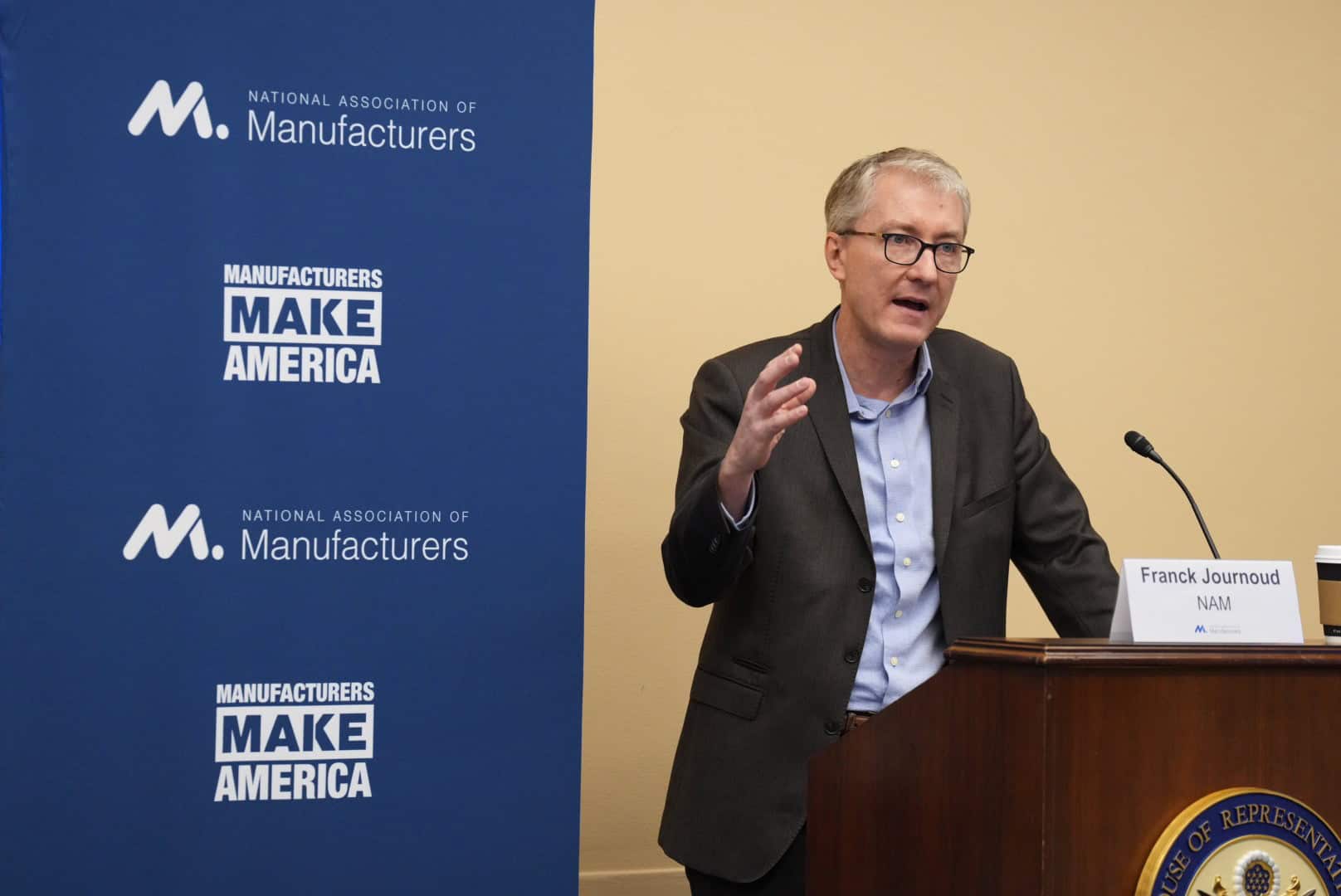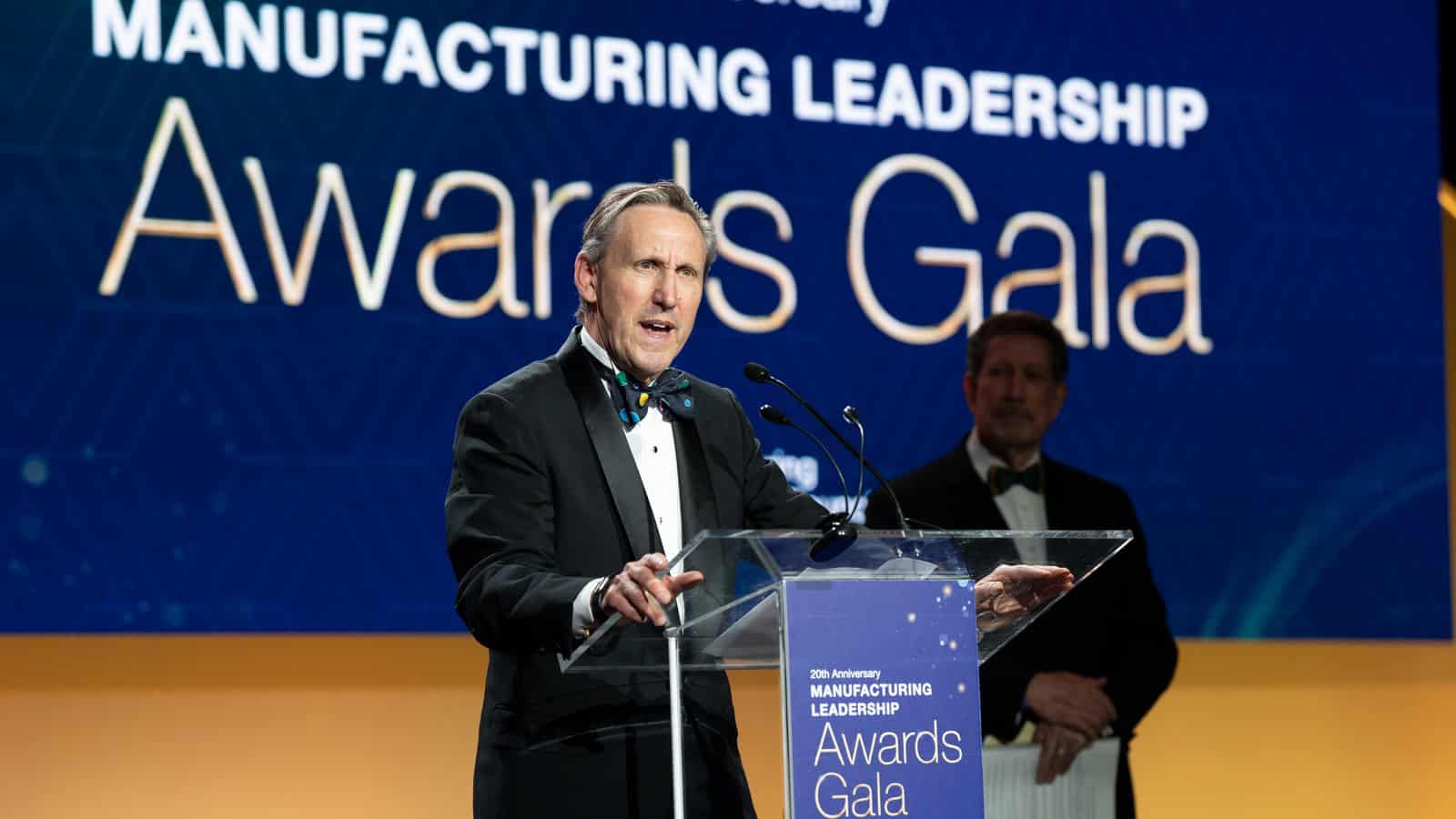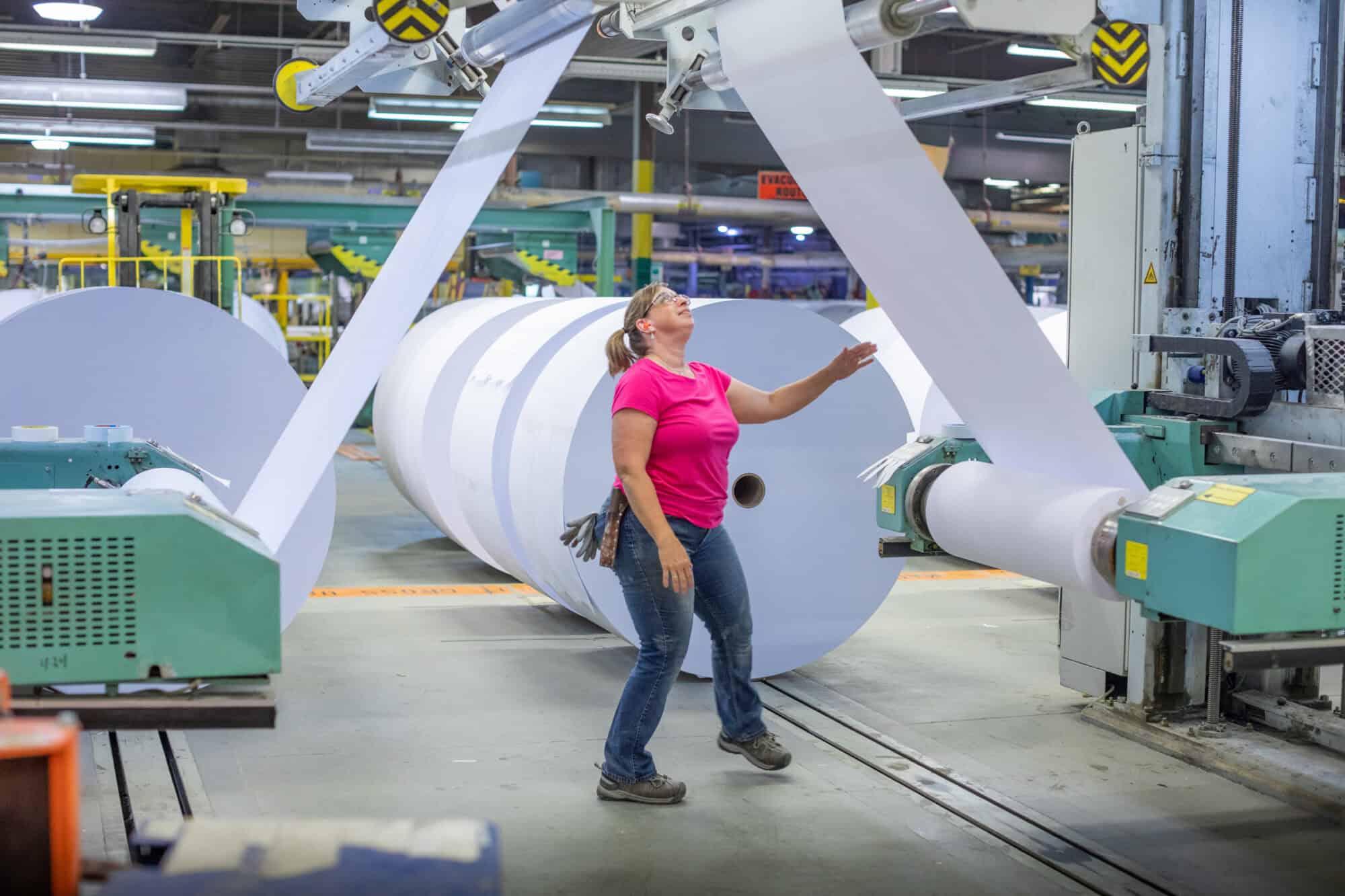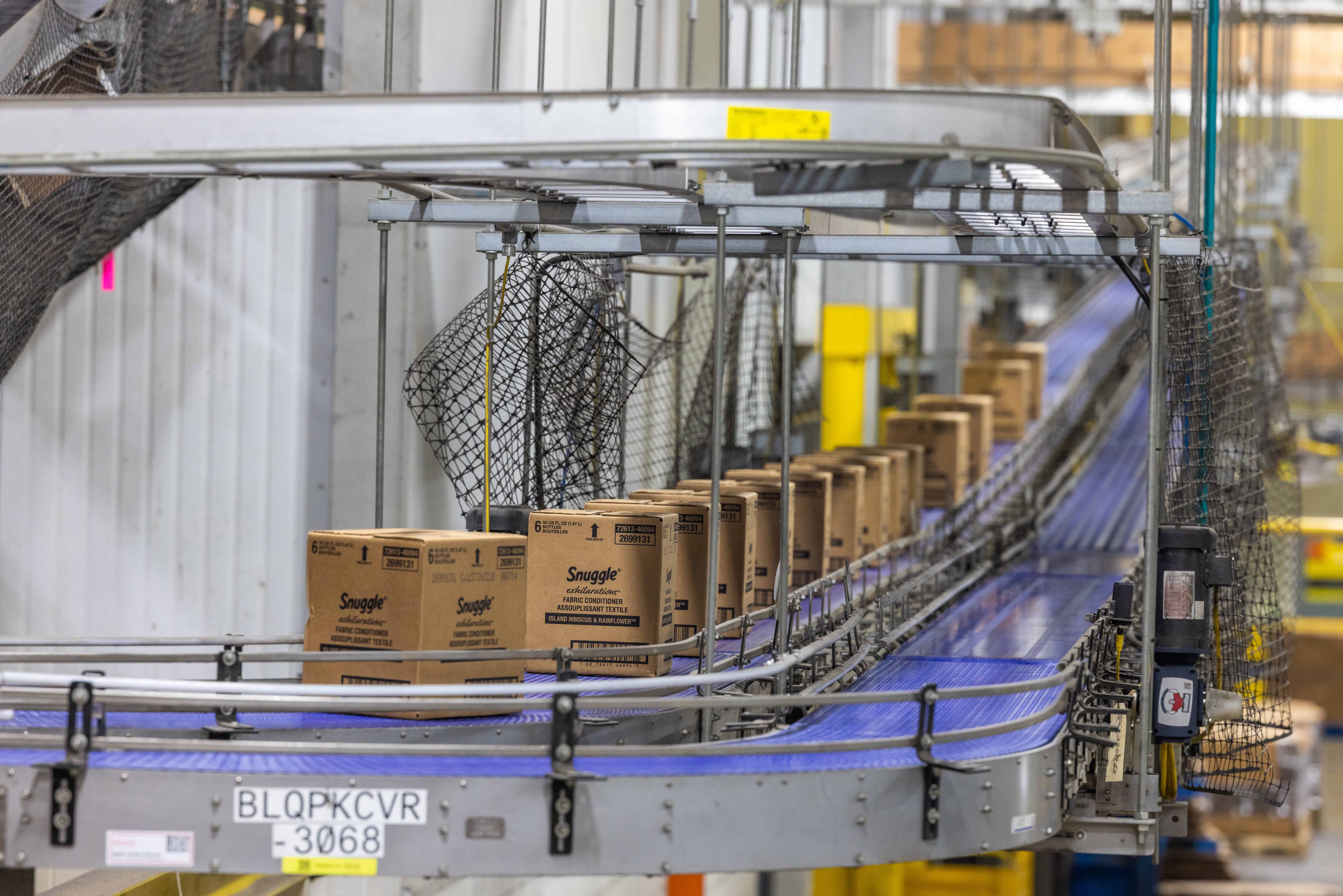Drug Makers Invest in Radiopharmaceuticals

Pharmaceuticals manufacturers are increasingly turning to radioactive drugs in their battle against cancers (CNBC).
What’s going on: Eli Lily, Bristol Myers Squibb and others “have spent some $10 billion on deals to acquire or work with radiopharmaceuticals makers,” which produce drugs containing radioactive isotopes, predicting that the technology will be effective in treating multiple cancer types.
- Meanwhile, Novartis already has two radiopharmaceuticals, Pluvicto and Lutathera, available for cancer treatment, and several dozen more in development.
How it works: Radiopharmaceutical “drugs work by attaching radioactive material to a targeting molecule that searches for and attaches to a specific marker on cancer cells. The trick is finding markers that exist on cancer cells but not healthy cells. That can allow the treatment to deliver radiation to cancer cells and spare the rest of the body from the level of damage that comes with many cancer drugs.”
- Bristol Myers Squibb sees “opportunity [in] … combining radiopharmaceuticals with existing cancer drugs like immunotherapy, said Robert Plenge, Bristol’s chief research officer.”
More interest: Though radiopharmaceuticals have been around since the 1940s, they’ve only begun drawing big interest in recent years.
- Early this year, Bristol Myers Squibb completed a $4.1 billion acquisition of radiopharmaceutical startup RayzeBio.
- In 2023, Eli Lilly acquired radiopharmaceutical company Point Biopharma and signed partnerships with businesses that are developing treatments.
In-house production: Among the key criteria in Lilly’s search for a firm to acquire: “whether companies were prepared to manufacture the drugs,” according to Eli Lilly Executive Vice President and President of Lilly Oncology Jacob Van Naarden.
- “Radiopharmaceuticals aren’t easy to make, and Lilly wanted to make sure any initial acquisition could produce the drugs themselves instead of outsourcing the work.”
Safety and speed are everything: Each dose of Novartis’ Pluvicto has a GPS tracker to make sure it goes to the correct patient at the correct time, said Victor Bulto, president of the U.S. unit for Novartis. That’s because the therapies are only good for a few days once made.
- Novartis is “investing more than $300 million to open and expand radiopharmaceutical manufacturing sites in the U.S. so it can produce the drug and get it to patients quickly.”
- The pharmaceutical company “drives doses to destinations that are within nine hours from the factory to minimize the risk of disruptions from storms, Bulto said.”
Special considerations: Radiopharmaceuticals come with unique challenges.
- One health care network had to upgrade its medical license before it could be allowed to handle radioactive materials, and “[a] certified specialist needs to administer the drugs, which are given intravenously.”
- To avoid exposing people to radiation, patients taking the treatments must remain at a distance from others for a week or more following the injections, which they get every six weeks.
Big opportunity: Though full understanding of radiopharmaceuticals’ potential may be years away, “[i]f we can be successful in expanding the target and tumor type repertoire, this could be a very big class of medicines,” Van Naarden said.
Techmer PM Offers Safe Alternatives to PFAS for Manufacturers

The search for alternatives to chemicals called PFAS has been going on for years. Recently, materials design company Techmer PM created one—a new chemical for use in polymer processing.
The new solution: Last year, the Clinton, Tennessee–based manufacturer introduced the HiTerra T5—a polymer processing aid that helps maintain film surface smoothness and die-lip buildup—which replaces traditional chemistry based on per- and polyfluoroalkyl substances.
- The HiTerra T5, which meets Environmental Protection Agency guidelines and does not interfere with other additives, is being used in large-scale commercial undertakings by Techmer PM customers.
Why it’s critical: In March, the EPA issued the first federal reporting limits and guidelines for tracking the use of PFAS in manufacturing, along with other PFAS-related regulations. Individual states are also imposing their own restrictions on PFAS chemicals.
- The current regulatory environment is motivating plastics processors and raw materials suppliers to seek new alternatives to this chemistry.
- “The biggest challenge is that fluorinated chemistry is excellent at reducing friction, reducing melt fracture, improving hydrophobicity, stain resistance and helping the processing that manufacturers use, for example, to make film,” Techmer PM CEO Mike McHenry told the NAM in a recent interview. “It also helps with wear on small gears. It’s very effective, and it has unique properties that customers are accustomed to.”
More replacement efforts: Techmer PM is working closely with its customers to come up with additional PFAS alternatives, McHenry said.
- Because one of PFAS’ most useful characteristics is its ability to resist fire, “we’re looking at ways to remove halogen flame retardants, including fluorinated compounds” and find a comparable alternative for customers, McHenry said.
Unrealistic timelines: While the firm is hard at work developing potential replacements, the stringent deadlines that the EPA has set for the reporting and potential elimination is damaging, McHenry told us.
- “It can take years to get use approval [for alternatives], and finding them is a huge challenge in itself,” he went on. “We see the timelines being put forth as something that needs to be looked at, and [manufacturers] need support.”
- “For some uses—tubing, for example–it’s going to be very difficult to find something that will work the way fluorinated chemistries do. As much as we all want to move away from [PFAS], there are some instances in which it will be worse” to rush the search than continue using PFAS, he added.
- One of these areas is medical devices, McHenry said. The gowns used to protect surgeons and nurses, for example, are coated in PFAS-containing substances, which “will be very difficult to replace.”
The long view: For many applications, dependable alternatives will likely be found at some point, McHenry concluded.
- “I think we’ll find alternatives, but it’s not one-size-fits-all, and it will take time,” he said. “The versatility of fluorinated compounds is unique.”
The NAM Briefs Congress on AI

Generative AI tools like ChatGPT and Midjourney have grabbed headlines, but artificial intelligence–driven innovations like digital twins, computer vision and robotics are also transforming manufacturing in America.
Last week, the NAM briefed congressional staff from the House Task Force on AI to help educate policymakers on the role manufacturers are playing as both developers and deployers of AI technologies. The briefing follows the publication of the NAM’s first-of-its-kind white paper on the ways manufacturers are using AI.
The briefing featured a panel discussion among AI experts from major manufacturers, as well as the AI leads from the NAM and the Manufacturing Leadership Council.
Faster breakthroughs: AI is accelerating research and development at manufacturing companies, the panelists reported, allowing them to create or improve products in record time.
- For example, pharmaceutical companies are using AI to develop and test new lifesaving drugs, while automakers are using it to improve vehicle components.
Increased safety: AI is helping to prevent accidental collisions on the shop floor and enhancing equipment that makes tasks safer, such as robotic exoskeletons that collect and learn from data on the wearers’ movements and environment.
- In addition, companies are using AI to better understand and monitor product performance, helping reduce maintenance costs and avoid dangerous malfunctions.
Augmenting human labor: Manufacturers often use AI technology to complement and augment the work of humans, according to the panelists.
- Human operators still make decisions and oversee operations, but AI has helped improve the reliability of manufacturers’ processes as well as the quality, delivery and safety of their products.
- This combination of human ingenuity and AI enhances efficiency while still prioritizing human experience.
Policy recommendations: Panelists discussed what Congress can do to support AI-driven growth in the manufacturing sector, including:
- Modernizing compliance requirements to support AI development and adoption, especially for small manufacturers most affected by regulations;
- Ensuring that the regulatory environment helps the U.S. maintain global leadership in AI innovation, including by adjusting rules based on context and risk; and
- Creating or supporting initiatives to train workers in AI-related skills, including by providing the data needed to develop these programs.
The last word: “The future of manufacturing is inseparable from the future of AI,” said NAM Senior Director of Technology Policy Franck Journoud.
- “It is crucial that policymakers hear directly from manufacturers that are leading the development and adoption of this transformative technology. The NAM is thankful to have had an opportunity to share this world-class expertise, and we are committed to working with Congress to ensure the U.S. remains a global leader in AI innovation.”
NAM Welcomes New Chief Economist

The NAM has a new chief economist.
Victoria Bloom, who was most recently the economist for the Senate Commerce, Science and Transportation Committee minority staff, joined the NAM and its 501(c)3 workforce development and education affiliate, the Manufacturing Institute, this summer. She had worked on Capitol Hill since 2017.
Our view: “Manufacturing in the U.S. is a life-changing force for good, providing well-paying jobs and career opportunities and products that improve the quality of life for everyone,” NAM President and CEO Jay Timmons said. “Victoria will help us tell this story with compelling data, which will demonstrate the real impact of policy decisions and illustrate the modern manufacturing resurgence.”
- Added MI President and Executive Director Carolyn Lee: “With the addition of Victoria to the MI team as the head of research, we look forward to expanding our portfolio of studies on the key workforce and competitiveness issues facing manufacturers.”
Legislative chops: Bloom, who holds a bachelor’s degree in economics from Louisiana State University and a master’s degree from George Mason University, previously worked for Sen. David Perdue (R-GA) and Rep. Gary Palmer (R-AL), in addition to her work on the Senate Commerce Committee.
- As Senate Commerce Committee economist, she served as lead economic and budgetary adviser to Ranking Member Ted Cruz (R-TX) and the minority committee staff.
Glad to be here: “After years of working on Capitol Hill and lending my economic expertise to policy debates, I am excited to focus my efforts on the 13 million people who make things in America,” Bloom said.
Meet the Manufacturing Leader of the Year

If you’re looking for insights on digital transformation, cultural change and what’s ahead for manufacturing, it pays to consult an industry leader. Dan Dwight, president and CEO of Cooley Group, fits the bill.
Dwight was named the 2024 Manufacturing Leader of the Year in the Manufacturing Leadership Awards, presented by the Manufacturing Leadership Council, the digital transformation division of the NAM. Additionally, Cooley Group won the Small/Medium Enterprise Manufacturer of the Year and the Manufacturing in 2030 Award.
Recently, Dwight sat down for an Executive Dialogue interview with the Manufacturing Leadership Journal to share his secrets to success. Below are excerpts from the interview.
What leaders need: When asked what qualities manufacturing leaders need in the digital era, Dwight says that they must be willing to undergo big changes, but must also keep their teams in the loop.
- “Successful leadership in the digital era demands, among other things, a higher level of transparency,” he explained. “Your team needs to see the road map in front of them because successful and sweeping transformations are extremely time consuming with a lot of jagged edges that the leadership team needs to address.”
How cultures should change: As for the wider cultural changes that will help a company through its digital transformation, resiliency and adaptability are crucial, Dwight said.
- “Cooley’s digital transformation began with a cultural transformation built around becoming more agile and adaptable,” he noted. “Every decision we make places long-term resiliency and cross-functional collaboration as our operational North Star.”
- “Cooley decentralized our decision-making structures, eliminating hierarchal instruction and empowering team members to communicate transparently and more frequently,” he added.
Small manufacturers’ advantage: When asked whether small and medium-sized manufacturers are at a disadvantage in the era of digital transformation, Dwight says that Cooley has turned its small size into an asset.
- “Our longevity is built on using our size to our advantage. We are more resilient, more agile, more adaptable than our competitors who are often [much larger] because we constantly invest in pro-growth strategies regardless of the economic environment,” he explained.
- “Our investments in innovation generate consistent new product revenue of over 20%, and our investments in Manufacturing 4.0 digitization generate consistent, robust productivity dividends,” Dwight added.
What’s next? Cooley Group is looking ahead to further transformations, including in supply chain management, Dwight said.
- “Our business architecture and change management team leaders are working within their respective teams across the organization to build into our processes a more outward-looking focus,” he said.
- “For example, our M4.0 implementation leader has added supply chain resiliency to her leadership responsibilities. Her team seeks to build out Cooley’s end-to-end business resilience.”
MLC in action: Dwight says that Cooley Group has always been able to count on the MLC to find the insights that it needs for digital transformation and its Manufacturing 4.0 journey. As he put it recently, “When challenges do arise, the MLC can help us think through what the future might look like.”
Watch a full video of this interview for more insights.
Seventy Percent of Manufacturers Still Enter Data Manually

Manufacturers are deluged by data. As companies adopt more advanced technologies, they are increasingly overwhelmed by the quantities of raw data that must be collected, analyzed and put to use.
Indeed, a new survey from the Manufacturing Leadership Council—the NAM’s digital transformation arm—reveals that 70% of manufacturers still collect data manually. Here are some highlights from the survey, which reveals where manufacturers need to improve, and how they’re planning to do it.
Exponential data growth: While the survey’s respondents report an explosion of new data, they also expect to keep on top of it over the next few years.
- Forty-four percent of manufacturing leaders have seen at least a doubling of the amount of data they collect in their organization today compared to two years ago.
- While many manufacturers still lack standardized data due to operating a mix of older equipment and systems along with newer technologies, more than half expect that their data will be in a standardized format by 2030.
Analytical improvements: How are manufacturers planning to use all this new data?
- Nearly 60% of respondents say they are focused on understanding their operations with an eye toward optimizing them in the future.
- While 30% of manufacturers say they are using manufacturing data to predict operational performance, another 60% say that predictivity will be a primary objective by 2030.
Better decisions: Manufacturers use data to make better, more proactive decisions, according to the survey. Today, these decisions are made at a relatively high level.
- Seventy-seven percent of respondents said that the responsibility to employ data in decision-making falls to plant leaders and managers.
- Only 33% said that factory floor employees held that responsibility—a percentage that might grow as manufacturers seek to empower frontline employees with greater decision-making ability.
Looking ahead: As artificial intelligence and other emerging digital technologies become more established, they will likely reshape many if not all aspects of manufacturing operations.
- Thanks to advanced sensors and robust data networks connecting equipment and machinery, manufacturers will collect copious data in real time and act on it almost as swiftly.
Read more: To get a deeper look at the current state of data mastery in manufacturing, download the full survey, Data Mastery: A Key to Industrial Competitiveness.
Sylvamo Supports Healthy Forest Ecosystems

With a name that means “love of forests,” Sylvamo has a built-in dedication to sustainability. And the Memphis, Tennessee–based paper company, which spun off from International Paper in 2021, lives up to its moniker.
A holistic approach: “We use the whole tree in the manufacturing of our products,” Sylvamo Chief Sustainability Officer James McDonald told the NAM. “We use the fiber from the wood to make our paper, and all the residuals—think of the sticky stuff in trees—we capture and use to generate energy.”
- This process supplies the company with approximately 85% of its global energy needs, according to McDonald.
Planting the world: Sylvamo, which produces well-known brands like Hammermill, Accent Opaque, Springhill and HP Papers, is committed to restoring and protecting forests worldwide.
- “Our entire business depends on the sustainability of forests,” McDonald said. “It turns out your third-grade science teacher was right—photosynthesis does work. The more trees we grow, the more we can clean the air and protect the environment.”
Big ambitions: Sylvamo has conserved, enhanced or restored more than 37,000 acres of forestland to date. It has set the lofty goal of reaching 250,000 acres of forestland by 2030.
- To that end, the company is supporting the Nature Conservancy’s work to create a healthy, resilient and connected Appalachian landscape in the U.S. and the World Wildlife Fund’s work to restore Brazil’s Atlantic Forest, while also working with individual landowners to enhance forest management practices in France.
Diverse sources: Sylvamo primarily sources local fiber to manufacture its products in Europe, Latin America and North America, a strategy that enables a smaller environmental footprint, McDonald said.
- “Most of the fiber is sourced very close to [each] mill, which supports our low-cost assets in each region and this global footprint advantage in those markets,” he added.
GHG goal: The company is committed to a greenhouse gas reduction goal of 35% from a 2019 baseline across all three emissions scopes, an ambitious goal that demonstrates a commitment to improve Sylvamo’s climate impact continuously, according to McDonald.
- A quick refresher: Scope 1 refers to direct emissions, Scope 2 to indirect emissions associated with the purchase of power and Scope 3 to indirect emissions produced by a company’s value chain.
- Above all, “we try to be efficient with the energy we do use so that we can use less to produce our products,” McDonald told us.
A vital commodity: Paper and paper products continue to “play a crucial role every day in people’s lives,” said McDonald—and they are some of the world’s most recyclable materials.
- Some 68% of paper in the U.S. was recovered in 2022. In some parts of Brazil, the percentage is about 60%, and in Europe, it’s near 80%, he added.
The last word: “Just think about it: We use paper for education, communication, entertainment and more,” McDonald pointed out. “Our product plays a huge role in society and has a good lifecycle story.”
How Henkel Is Exceeding Sustainability Goals

If you ask Henkel how it managed to cut its worldwide carbon footprint in half a few years ago, its leaders will gladly let you in on the secret: there isn’t one.
The impressive reduction is down to common sense and good old-fashioned effort.
Putting in the work: “One focus is on our own sites and production, and we’re continuously working on this,” said Henkel North America President Pernille Lind Olsen.
- By the end of 2023, the global adhesives and consumer brands manufacturer had fully converted 19 of its worldwide facilities to run on renewable electricity sources, a feat it achieved through on-site energy production including wind and solar, as well as direct purchase of green power from local utility companies.
- Henkel also entered into virtual power purchase agreements, financial transactions through which it buys renewable energy credits that serve to decarbonize geographically diffuse operations.
- In addition, the company hired energy-efficiency consultants to come into its most energy-intensive plants and tell it where and how to cut down on resource use and waste.
Exceeding goals: Thanks to these efforts, Henkel has reduced its carbon footprint by 61%, heading toward its 2025 goal to slash its carbon footprint (from a 2010 baseline) by 65%.
Sustainable personal care: Henkel is always on the lookout for ways to increase the sustainability of its 30-plus beauty and personal care brands, which include Purex and All laundry detergents and Schwarzkopf hair cosmetics.
- For example, the company keeps a formulation database of its more than 200,000 products. In the database, each formula is assigned a compact sustainability report, making it possible for the company to compare profiles “to optimize the impact of our footprint,” Olsen told us.
- Last March, Henkel reformulated and repackaged its Dial body washes in order to use bottles made from 100% recycled plastic.
- Henkel has also reduced the amount of virgin plastic in the bottles of Persil laundry detergent, replacing it with recycled content.
Less to landfills: Henkel isn’t done setting goals. It’s now aiming to send exactly zero waste to landfills by 2030.
- And it’s making progress: through partnerships with local waste management companies, in 2023 Henkel converted three of its U.S. sites to redirection rather than disposal of production waste from their operations—that is, they have established processes to keep materials out of landfills. Some of the ways they do this are to recycle or reuse items rather than throw them away.
- Meanwhile, some 82% of Henkel’s global facilities had already been doing the same.
A symbiotic relationship: Pursuing sustainable methods is both a business and moral imperative for the company, which will celebrate 148 years of business in September.
- “As climate change becomes a bigger challenge for everyone to tackle, it becomes increasingly necessary to prioritize sustainability as part of your business,” Olsen said.
- “And sustainability is good business for us and our customers. There’s a price benefit there. For example, when you lower the temperatures or reduce process steps at our industrial process customers, energy and material usage will be lower, maintenance of the equipment becomes less frequent and you can run longer without stopping, which saves money.”
Stronger together: “To make sure the planet’s resources can sustain us and our kids for generations, we will need to tackle the sustainability challenge of how to use less energy, fewer materials, less water,” Olsen concluded.
- “That’s a big challenge, and I’m a firm believer that it needs to be tackled collaboratively. I believe the business leaders of today play a decisive role in how we will do that.”
This story has been edited.
Click Bond Brings AI into Supply Chains

Manufacturers have always been on the cutting edge of tech development and integration—and it’s no different with artificial intelligence. Today, Click Bond, Inc., a manufacturer of adhesive-bonded fasteners for aerospace and industrial use, is finding applications for AI in the supply chain.
The challenge: Supply chain management is an inexact art, according to Click Bond Chief Executive and NAM SMM Vice Chair Karl Hutter, and technology like AI has the capacity to strengthen operations.
- “There are many spots … [where] a guess has to be taken or padding has to be put in because of the known unreliability of data,” said Hutter. “This is where technology has a big role to play.”
Improving efficiency: AI can break through these challenges, separating signal from “noise” and avoiding presumptions that can cause inefficiencies.
- “We need to have a better sense of the supply, the demand, the schedule,” Hutter said. “This is where those kinds of tools can fit in—so we as a supplier can optimize our production runs, meet our customers’ needs efficiently and be responsive to just-in-time supply.”
- “AI does that key job of finding what matters and correlating historic data and making predictions in a way a human can’t,” he continued.
Translating data: Because there is no single, industry-wide method for formatting data, it can be difficult for manufacturers to combine their knowledge. Happily, AI can help.
- “My data tables might look different than my customers’ and suppliers’,” said Hutter. “AI can understand the rules of data structure, and that of our customers and suppliers, and it can be a translator between them.”
- For example, Click Bond has supplied products to the Boeing Company for almost 40 years, contributing to every type of product made across its military, civil and space divisions. AI stands to take that collaboration to an even higher level.
Enhancing production: AI tools also help manufacturers during the production process by translating different kinds of data and pointing toward solutions.
- “[AI’s translation capability] applies to the technical data environment, too—how you go from a model and simulation to a produced part,” said Hutter. “It’s the same thing. How do you do technical data interchange confidently and securely? This technology [can help].”
Advice for other manufacturers: Hutter recently took part in a workshop on these tools, and he encourages manufacturers who are curious about the technology to find similar opportunities.
- “There is nothing that makes these concepts come to life [like] getting your hands on them,” said Hutter. “You can sit there and furrow your brow and read a bunch of articles, but the best thing to do is to find one of the many opportunities for some hands-on education—and you’ll start to understand what these tools can do.”
Foxconn Shines a Light on Solar Energy

Manufacturers across the U.S. are taking new steps toward sustainability. For Foxconn—a consumer electronics contract manufacturer and solutions provider with U.S. headquarters in Milwaukee, Wisconsin—that effort is about to get a big boost.
The project: Foxconn is developing a massive field of 2,000 solar panels covering nearly eight acres of land around a retention pond at its Racine County campus in Mount Pleasant, Wisconsin.
- The panels are expected to go live at the end of July, when they’ll generate approximately one megawatt of power, which will be used to manufacture data servers.
- “That’s about 1,200 metric tons of carbon dioxide saved every year and enough energy to power about 300 American homes,” said Robert Schlaeger, head of U.S. government relations for Foxconn.
The big picture: The project—a partnership between Foxconn and utilities provider We Energies—is part of a bigger initiative from Hon Hai Technology Group in Taiwan.
- Hon Hai already uses green energy for about 40% of its power consumption across global operations. It has pledged to run wholly on green energy by 2040 and to achieve net-zero emissions by 2050.
- “This is really a top-down approach for the entire technology group under the leadership of our Chairman Young Liu,” said Schlaeger. “You can see how that trickles down to the things we try to achieve at a regional level and within those regions, down to the site level.”
The impact: In 2022, the technology group spent $75 million globally on 1,877 energy-saving projects. Schlaeger views sustainability projects such as the Foxconn solar field as an important signal of the company’s commitment.
- “As Foxconn grows and responds to market demand around the world or within the United States, renewable energies demonstrate the company’s commitment to environmental stewardship across supply chains—to our customers and to our communities,” said Schlaeger.
The business case: Investments like this one are important to the company’s long-term future, but they also matter to customers right now.
- “We have customers who want to know that they are employing contract manufacturers like us that are producing their product in a responsible manner,” said Schlaeger. “What type of energy are you using? Where does the energy come from? These questions are important to our customers—and we want to show them that whether you look to our aspirations as a whole, or down to the site, you can see our commitment to green energy.”
